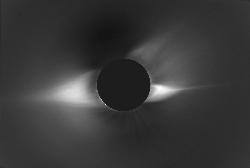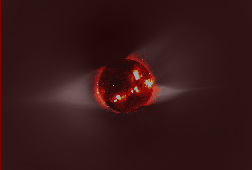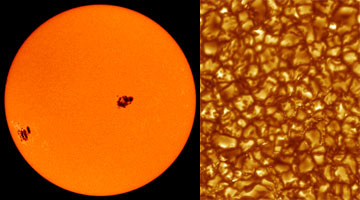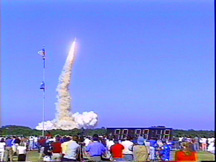Click on image for full size
the High Altitude Observatory, National Center for Atmospheric Research (NCAR), Boulder, Colorado, USA. NCAR is sponsored by the National Science Foundation.
Last Solar Eclipse of the Millennium on August 11
News story originally written on August 3, 1999
The last solar eclipse of this millennium occurred on August 11, 1999. Amateurs and scientists witnessed a truly awesome site. This was a total eclipse, which means the Moon completely covered the Sun. Astronomers had a rare chance to see the Sun's corona, which isn't normally seen because of the intense light from the Sun.
The solar eclipse could be viewed in Europe, the Middle East and India. If you visited one of these areas you should have protected your eyes. Make sure to never look at the Sun directly! Always use one of the approved viewing devices.
When the Moon passed in front of the Sun, it blocked most of the light that would normally hit Earth in these areas. So, in the middle of the day, the Earth slowly darkened before the Sun was revealed. The entire event took about 2 hours, but because the shadow moves, the average viewer had a 2 minute show. This special event served as more than just a spectacle. Experiments were carried out to study the corona, weather changes and even the effect on Earth's gravity.
In the eclipse photograph on the left, the dark center is the disk
of the Moon as it passes between the Earth and the Sun.
The beautiful white coronal streamers
extending out from the Sun
(seen on the left and right of the black lunar disk) are a commonly
observed feature during eclipses.
When there is no eclipse, these features cannot be seen
because the blinding light of the photosphere overwhelms the scattered light from the corona.















